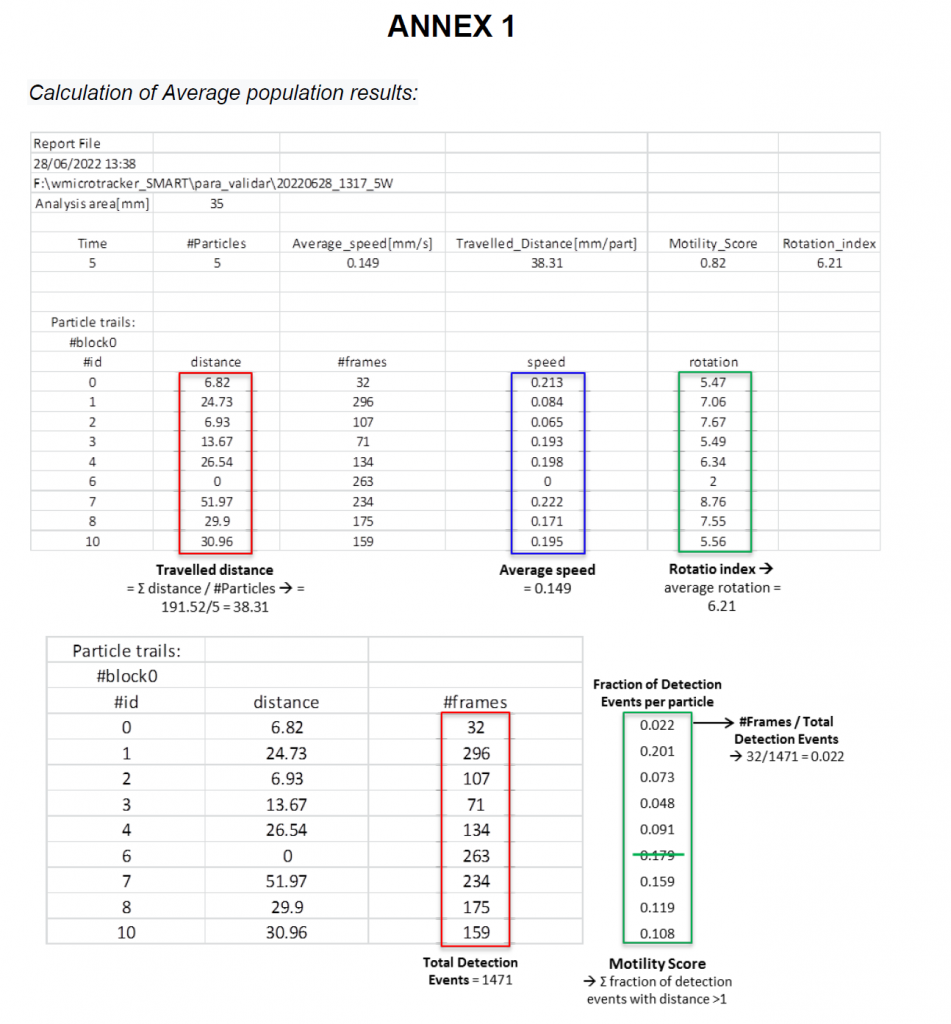In brief, the “Motility score” represents the fraction of moving particles detected during the analysis cycle. This score ranges from 0 (0%) to 1 (100%). The calculation is based on the analysis of parameters related to moving particles:
-The number of detection frames for each moving particle ID is considered.
-The contribution of each particle to the total detections is calculated.
-The contributions of all particles that move less than 1mm are summed.
Motility score represents a metric that quantifies the degree of mobility of particles being tracked in a data set. Specifically, it calculates the proportion of time during which particles exhibit minimal movement, defined as having a distance greter than 1mm, relative to the total time in a specified time block. This metric is valuable for understanding and analyzing the extent of particle immobilization during different periods, potentially revealing insights into the behavior and dynamics of the tracked particles over time. It provides a numerical measure of “motility”, or the inverse of “paralysis”, which can be useful for scientific and analytical purposes, such as in the study of biological processes or motion analysis.
We have compared this score with manual visual scoring for lifespan experiments, and it has shown to have very good accuracy.

An example to calculate this parameter is as follows:
- Open the ‘worm_trails.csv’ file with MS Excel.
- Sort the file by Particle ID. For each Particle ID, calculate the distance as the sum of the square root of ((x2 – x1)^2 + (y2 – y1)^2) and determine for how many frames the Particle ID is detected.
- Create a new table that includes Particle ID, distance, and the number of frames. A summary of this information is already present in the ‘particle_trails.csv’ file.
Now, for each Particle ID:
- If the Particle ID’s distance > 1 mm, add the “number of frames” to an accumulator variable. Repeat this step for every Particle ID with a distance > 1 mm.
Finally, divide the accumulator variable by the total number of frames (the sum of total frames) for all particles. The resulting value will be the Motility Score.
